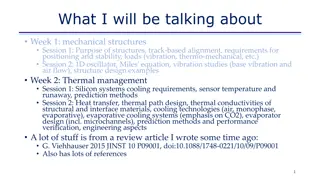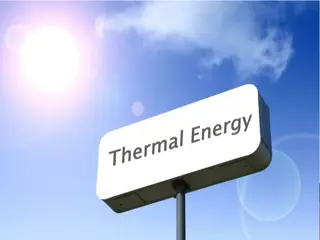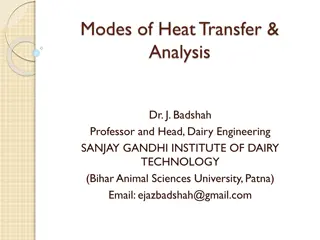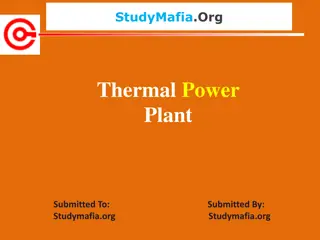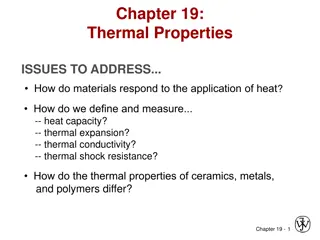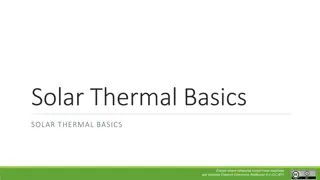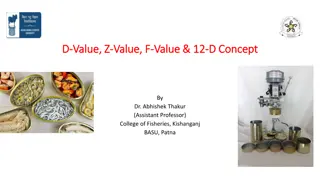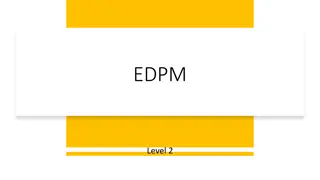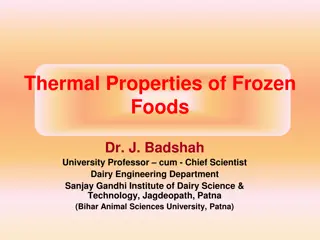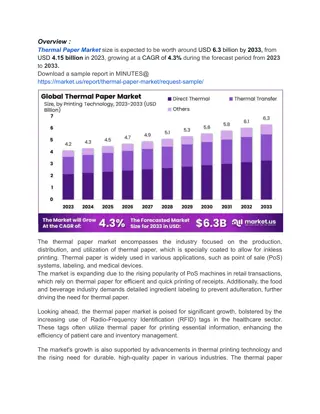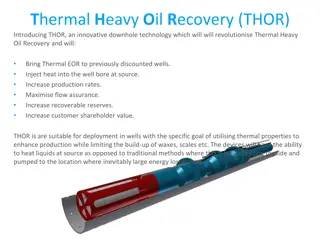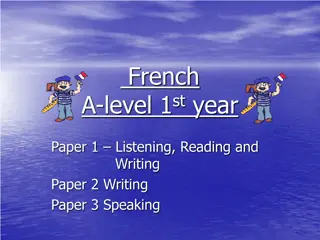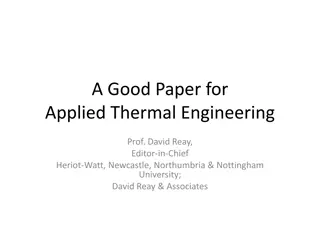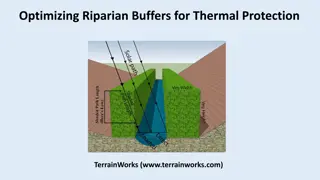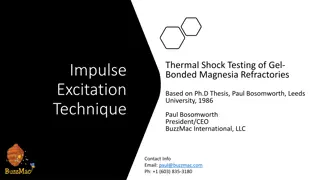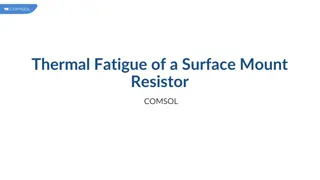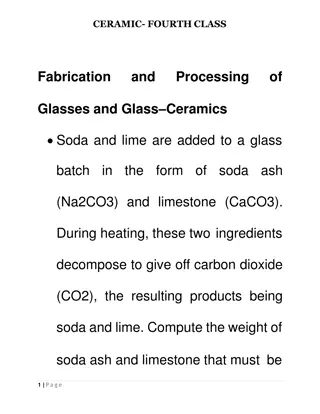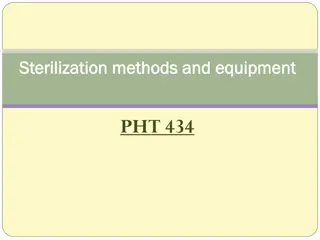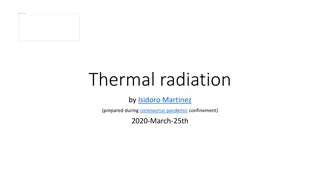TFAWS Active Thermal Paper Session
This paper discusses the thermal gravitational scaling of similar fluids in active thermal systems. The authors present three example applications, highlighting the significance of dimensionless numbers in understanding fluid behavior under thermal influences. The study provides valuable insights into the interplay between thermal and gravitational effects, offering practical implications for various fields of applied science and engineering.
Download Presentation

Please find below an Image/Link to download the presentation.
The content on the website is provided AS IS for your information and personal use only. It may not be sold, licensed, or shared on other websites without obtaining consent from the author.If you encounter any issues during the download, it is possible that the publisher has removed the file from their server.
You are allowed to download the files provided on this website for personal or commercial use, subject to the condition that they are used lawfully. All files are the property of their respective owners.
The content on the website is provided AS IS for your information and personal use only. It may not be sold, licensed, or shared on other websites without obtaining consent from the author.
E N D
Presentation Transcript
TFAWS Active Thermal Paper Session Similar Fluids Based on Thermal Gravitational Scaling Using Dimensionless Numbers for Three Example Applications Leon P. M. Brendel James E. Braun Eckhard A. Groll (presenter) Purdue University Thermal & Fluids Analysis Workshop TFAWS 2020 August 18-20, 2020 Virtual Conference
Outline 1. Motivation 2. Thermal gravitational scaling 3. Examples ?? 4. Closing thoughts and questions TFAWS 2020 August 18-20, 2020 2
MOTIVATION TFAWS 2020 August 18-20, 2020 3
Acceleration of space exploration Astronauts in commercially built rocket to ISS Three governments with Missions to Mars in 2020 Projects on habitats on other planets TFAWS 2020 August 18-20, 2020 4
Two-phase flow research in microgravity Many parabolic flight experiments for over 3 decades Several review papers/books More than 10 Gravity independence criteria Few validations Very few two-phase flow cycles in microgravity If there is so much two-phase flow research to enable systems, why is there then so little research on systems? A. E. Dukler, J. A. Fabre, J. B. McQuillen, and R. Vernon, Gas-liquid flow at microgravity conditions: Flow patterns and their transitions, International Journal of Multiphase Flow, Jul. 1988, TFAWS 2020 August 18-20, 2020 5
Refrigeration cycles in microgravity 2 vapor compression cycles on ISS (SKV1 and SKV2) Only few predecessors: 1982: First test 1990s: OR/F, EOR/F, LSLE 2000s: Refrigerated centrifuge Why not more? TFAWS 2020 August 18-20, 2020 6
THERMAL GRAVITATIONAL SCALING What is it? TFAWS 2020 August 18-20, 2020 7
Non 1-g two-phase system design tools Gravity independence Thermal gravitational scaling One system, same performance across different gravity levels Model system to predict prototype system behavior at different gravity level Matching dimensionless numbers for model and prototype Correlating threshold flow velocity Contributors (1989-2004) C. J. Crowley A. A. M. Delil E. K. Ungar K. M. Hurlbert Threshold velocity potentially causing high pressure drop/performance penalty TFAWS 2020 August 18-20, 2020 8
Delils approach A. A. M. Delil, Two-Phase Heat Transport Systems for Spacecraft Scaling with Respect to Gravity, Journal of Aerospace, 1989. TFAWS 2020 August 18-20, 2020 9
Delils approach Motivation Better understanding Design tool Well scaled system: velocity, temperature and pressurefield are identical Core problem: perfect similitude between model and prototype is obtained if [ ] all dimensionless numbers are identical in prototype and model [which] is not possible in the case of two-phase flow and heat transfer Need to select numbers! TFAWS 2020 August 18-20, 2020 10
Critique of Delils approach Unclear about Selection of ?-number subsets Weighting Allowed deviations Stresses Morton number Vague about applications Inconsistent in definition for dimensionless numbers A. A. M. Delil, Two-Phase Heat Transport Systems for Spacecraft Scaling with Respect to Gravity, Journal of Aerospace, 1989. TFAWS 2020 August 18-20, 2020 11
EXAMPLES How to use it? TFAWS 2020 August 18-20, 2020 12
Examples Two examples Water sewer on Moon R600a condensation on mars (one more example in the paper) Considered fluids for scaling: R113 R134a R143a R152a R600a Water Acetone Ammonia Ethanol Methanol N-Octane Propane TFAWS 2020 August 18-20, 2020 13
Adiabatic single-phase flow on Moon Sewer for Moon habitat Prototype parameters: Fluid: Water Temperature: 20 C Pressure: 100 kPa Depth: 0.5 m Flow velocity: 0.1 m/s Gravity: Moon (1.62 m/s2) Dimensionless numbers: Reynolds Froude Result: Ethanol at T=-6 C and u=0.25 m/s matches water very well ?? ? ? ???= ?; ???= ?? ? ???,?= ???,?; ???,?= ???,? ??= ?? ??/?? ??= ?? ??/?? TFAWS 2020 August 18-20, 2020 14
Condensing two-phase flow on Mars Refrigerant condenses in tube on Mars Parameters Fluid: R600a Sat. temperature: 40 C Tube diameter: 5 mm Flow velocity: 0.01 m/s Gravity: 3.71 m/s2 Dimensionless numbers ?2= ???, ?3= ???, ?4= ???, ?? ??, ?8= Variables: ?,?,?,?,? Need objective function! ?? ??, ?9= ???, ?14= ?/( ? ??) ?7= TFAWS 2020 August 18-20, 2020 15
Objective function For one ?-number: ? = ??? ?1 =?1,? ?1,? 1 =?1,? 1 ?1,? ?1,? For multiple ?-numbers: ? = ??? ?1,?2, ,?? =1 ?1,? ?1,? ?2,? ?2,? ??,? ??,? 1 + 1 + + 1 ? Example: Z=0.2: The ?-numbers in the model deviate on average 20% from the respective ?-number in the prototype Features Relative to magnitude Arbitrary number of dimensionless numbers TFAWS 2020 August 18-20, 2020 16
Results ??/?? ??? ??/?? ??? ??? ??,? ??,? 1 0.9 1.0 0.8 0.9 1.1 ??,? ??,? 1 0.8 0.6 1.3 0.5 0.4 ??,? ??,? 1 1 1 1 1 1 ??,? ??,? 1 1 1.1 1.1 0.9 1.1 ??,? ??,? 1 1 1.0 1.0 1.0 1.0 Fluid T [ C] Z 40.0 40.0 32.0 8.7 23.8 -1.0 0 R600a R600a R152a Propane R134a R143a 0.043 0.069 0.087 0.098 0.113 ?7 and ?8 ratio push for same fluid at same temperature Only one ?-number with gravity dependence (Froude) Confidence in results? Uncertainty of scaling? TFAWS 2020 August 18-20, 2020 17
CLOSING THOUGHTS AND QUESTIONS TFAWS 2020 August 18-20, 2020 18
Conclusions Promising design tool, still in early stage Need feedback from micro- and reduced gravity system designers Many open questions TFAWS 2020 August 18-20, 2020 19
Open questions Appropriate applications and interest from space industry? Uncertainty of method? Add more gravity dependent ?-numbers? How to approximate zero-gravity? (?? ) Groups of essential ?-numbers? Allowed ?-number deviation? Good objective function? Potential of inclined testing for gravitational scaling? Thank you for your attention! ?? Questions (and answers) welcome! TFAWS 2020 August 18-20, 2020 20



